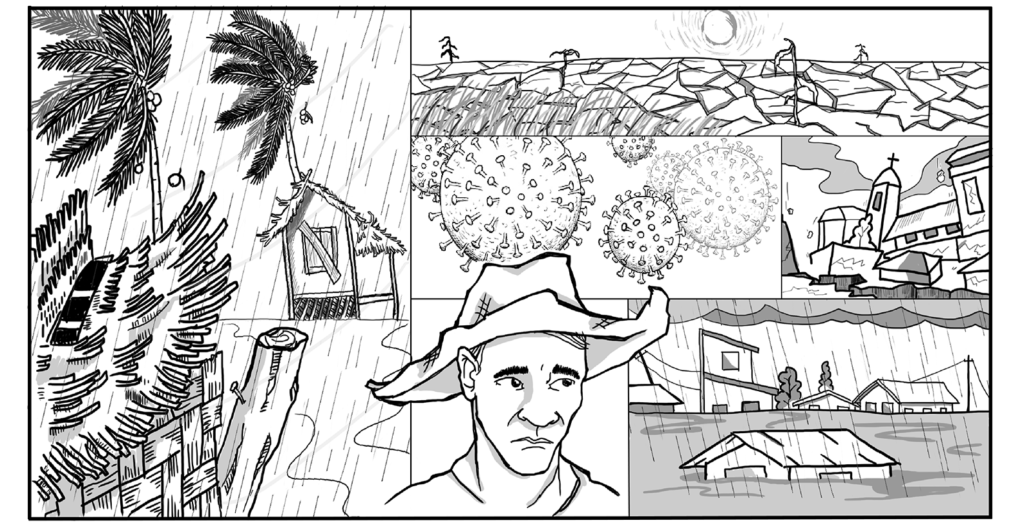Successive disasters in 2020


Prior to 2020, the Philippines has already been in various list of countries considered most vulnerable to the impact of climate change. The Philippines has long been facing threats of natural disasters due to its location. Today, however, the damages these cause on the people has become worse due to the catastrophic response of the local ruling class.
Approximately 19 to 20 tropical cyclones enter the Philippine area of responsibility per year, with about six to nine making landfall. This is because the country faces the Pacific Ocean where 60% of typhoons in the world originate.
Due to climate change, natural calamities now lash the country five times more than in 1980. It has also aggravated the impact of calamities today. The worst typhoons which hit the country is the past decade include Sendong (2011), Pablo (2012), Yolanda (2013), Glenda (2014) and Ompong (2018). The combined damage caused by these typhoons amount to ₱216 billion, with nearly 13,000 deaths.
Just this October to November, four strong typhoons successively hit the country resulting in 115 deaths and a conservative estimate of losses amounting to ₱45 billion. These include the supertyphoon Rolly which is considered the strongest trophical cyclone in the world this year. These typhoons resulted in massive floodings in the country which was last experienced in 2009, as well as landslides.
Global warming
Earlier, experts announced that the country would experience La Niña in the last quarter of the year after almost a decade. Due to the cooling of the Pacific Ocean, the country was expected to experience more typhoons with heavier intensities. The typhoons were expected to bring in volumes of water which could cause floods, landslides and overspilling of water in dams and rivers.
More frequent occurrence of La Niña phenomena which cause strong typhoons is one of the impacts of climate change which is the consequence of decades of capitalist environmental destruction.
Climate change is largely attributed to the emission of greenhouse gases. These gases (primarily carbon dioxide) are concentrated in the atmosphere and traps heat, thereby resulting in higher global temperature which disrupts the climate energy balance of the world.
The year 2020 is listed as the third hottest year on record. If the production of fossil fuel, gas and carbon will not be decreased by 6% annually, the earth is set to face grave environmental disaster. The said industries are largely responsible for global warming. These are mainly controlled by countries which serve as centers of capitalism including China, US and the European Union.
In the Philippines, these gases are largely emitted by coal-fired power plants. This October, 22 more plants were allowed to operate in the country in addition to 28 operational plants. The regime also sold off carbon reserves in Zamboanga Sibugay. Massive denudation and mining of forests are also among the top contributors of green house gas emission. Pandemics, epidemics and other disasters
Meanwhile, Covid-19, which was first detected in the country in March, has already infected more than 400,000 individuals and killed more than 8,500.
The start of 2020 was also marked by the eruption of the Taal Volcano in Batangas which forced more than 168,000 to evacuate. This has also caused damages amounting to more than ₱4.3 billion.
Earthquakes have also become more frequent and stronger. In recent years, the country experiences only nine up to 18 earthquakes annually with varying magnitudes. From a daily average of 2.2 in 2011, this has surged to 35 per day this year. Only five earthquakes with magnitudes 6 and above were recorded in 2011; today we are experiencing eight.
Due to massive floodings, leptospirosis cases also rose. Within three weeks, since November 12, leptospirosis cases at one hospital reached 89, more than half of the 163 cases it recorded since January.
On February, the African Swine Fever pandemic began to spread and infect pigs and continues to affect various provinces. More than 5,000 local hogs have been infected with the said disease.











